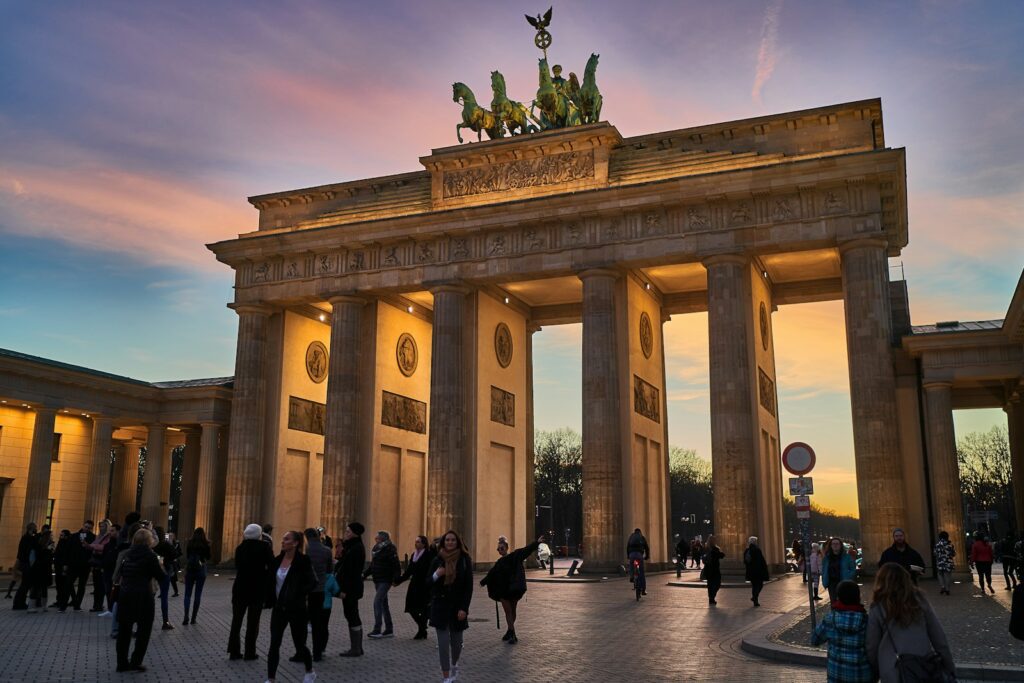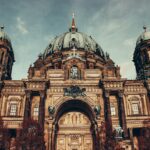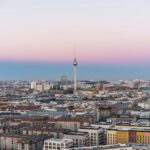The Brandenburg Gate, a neoclassical monument in Berlin, stands as a symbol of Germany’s tumultuous history and its eventual reunification. Erected in the late 18th century, this architectural marvel has witnessed pivotal moments in European history. Whether you’re a history enthusiast, architecture buff, or casual traveler, the Brandenburg Gate offers a glimpse into the past while remaining a vibrant part of Berlin’s present.
The Historical Significance of the Brandenburg Gate
The Brandenburg Gate has long been a silent witness to Berlin’s history. Commissioned by King Frederick William II of Prussia and completed in 1791, the Gate initially symbolized peace. Over the years, it became a backdrop for significant historical events, from Napoleon’s occupation to the Nazi parades, and eventually the Cold War’s division and the fall of the Berlin Wall.
Architectural Brilliance of the Brandenburg Gate
Designed by Carl Gotthard Langhans, the Brandenburg Gate is an excellent example of neoclassical architecture. Its design was inspired by the Propylaea, the gateway to the Acropolis in Athens. The Gate stands 26 meters high and is adorned with a stunning quadriga, a chariot drawn by four horses, driven by Victoria, the Roman goddess of victory.
Symbol of Division and Unity
During the Cold War, the Brandenburg Gate became a poignant symbol of division, standing just within the Soviet sector after the construction of the Berlin Wall in 1961. For nearly three decades, it was inaccessible to both East and West Berliners, epitomizing the Iron Curtain’s separation. When the Wall fell in 1989, the Brandenburg Gate was the site of joyous reunification celebrations, solidifying its status as a symbol of unity and freedom.
Brandenburg Gate’s Role in Modern Berlin
Today, the Brandenburg Gate is more than a historical monument. It is a central gathering place for locals and tourists alike. Events such as the New Year’s Eve celebrations and the Berlin Marathon start and finish here. The Gate is also surrounded by significant landmarks, including the Reichstag Building and the Holocaust Memorial, making it a key component of Berlin’s cultural and political landscape.
Planning Your Visit
Best Time to Visit
The Brandenburg Gate is accessible year-round, but the best times to visit are during the spring and autumn months when the weather is mild. Early mornings or late evenings provide a less crowded experience and offer stunning light for photography.
How to Get There
Located in the Pariser Platz at the end of Unter den Linden, the Brandenburg Gate is easily reachable by public transport. The nearest U-Bahn station is Brandenburger Tor on the U55 line, and several bus routes stop nearby. Walking or cycling through the historic boulevard of Unter den Linden is also a pleasant option.
Nearby Attractions
- Reichstag Building: A few minutes’ walk from the Gate, this iconic building houses the German parliament and offers a glass dome with panoramic views of the city.
- Holocaust Memorial: A somber yet essential visit, the Memorial to the Murdered Jews of Europe is located just south of the Brandenburg Gate.
- Tiergarten: Berlin’s expansive central park is ideal for a leisurely stroll or picnic after visiting the Gate.
Cultural and Social Impact
The Brandenburg Gate’s presence in Berlin extends beyond its historical significance. It is a focal point for cultural events, political rallies, and social gatherings. The Gate has featured prominently in films, literature, and art, continually inspiring and reminding people of the resilience and unity of Berlin.
Tips for Tourists
- Photography: Capture the Gate during different times of the day for varying light effects. The golden hour at sunrise and sunset provides particularly beautiful shots.
- Guided Tours: Consider a guided walking tour to learn about the rich history and significance of the Brandenburg Gate and its surroundings.
- Accessibility: The area around the Brandenburg Gate is wheelchair accessible, ensuring that everyone can enjoy this historic site.
FAQs
What is the Brandenburg Gate? The Brandenburg Gate is a neoclassical monument in Berlin, Germany, symbolizing peace, division, and reunification throughout its history.
Why is the Brandenburg Gate famous? It is famous for its architectural beauty and historical significance, having witnessed many pivotal events in German and European history.
Can you go inside the Brandenburg Gate? No, the Gate itself is not accessible inside, but visitors can walk through its columns and explore the surrounding area.
What are some nearby attractions? Nearby attractions include the Reichstag Building, the Holocaust Memorial, and the Tiergarten park.
When is the best time to visit the Brandenburg Gate? Spring and autumn are the best times to visit due to mild weather. Early mornings or late evenings offer a less crowded experience.
How do I get to the Brandenburg Gate? The Gate is located in Pariser Platz and is easily accessible by U-Bahn, bus, walking, or cycling.
Conclusion
The Brandenburg Gate stands as a testament to Berlin’s dynamic history and enduring spirit. From its architectural splendor to its role in significant historical events, the Gate continues to captivate and inspire visitors from around the world. Whether you’re delving into the past or enjoying the vibrant atmosphere of modern Berlin, a visit to the Brandenburg Gate is an essential part of any travel itinerary.



